Installation Guide for Telephone Pole Transformers: Safety, Setup & Maintenance Tips?
Are you tasked with installing or maintaining telephone pole transformers? This job can be dangerous if not done correctly. Many technicians struggle with the complex process and safety requirements.
This guide covers essential safety precautions, step-by-step mounting instructions, proper wiring techniques, grounding methods, and maintenance tips for telephone pole transformers. It’s designed to help technicians ensure safe, efficient installation and long-term performance of these crucial power distribution components.
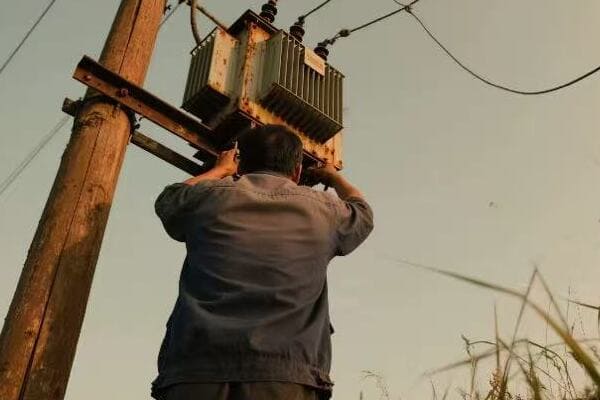
In this article, I’ll share my experience and insights on installing and maintaining pole transformers. Whether you’re a seasoned technician or new to the field, you’ll find valuable tips to ensure safety and efficiency in your work. Let’s dive into the details of this critical process.
Safety First: Essential Precautions for Pole Transformer Installation and Maintenance?
Have you ever wondered why safety is so crucial in pole transformer work? One wrong move can lead to severe injuries or even fatalities. Many technicians underestimate the risks involved in this high-voltage environment.
Safety in pole transformer installation and maintenance involves proper personal protective equipment (PPE), adherence to electrical safety standards, and thorough risk assessment. Key precautions include using insulated tools, ensuring power isolation, and following lockout/tagout procedures.
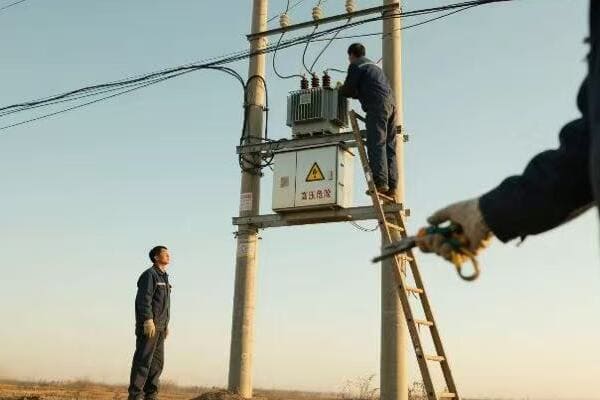
Diving Deeper into Safety Precautions
Let’s break down the essential safety measures for pole transformer work:
Personal Protective Equipment (PPE)
Proper PPE is your first line of defense. Here’s what you need:
- Insulated Gloves: Rated for the voltage you’re working with
- Safety Glasses: To protect against arc flashes
- Hard Hat: For protection from falling objects
- Fire-Resistant Clothing: To guard against electrical fires
- Safety Boots: With electrical hazard ratings
I once witnessed a near-miss where a technician’s non-rated gloves almost led to a severe shock. Since then, I’ve been adamant about proper PPE use.
Electrical Safety Standards
Adhering to standards is crucial. Key points include:
- OSHA Regulations: Follow all relevant guidelines
- NFPA 70E: Understand and apply these electrical safety standards
- IEEE Standards: Especially those related to transformer installation
Risk Assessment
Before starting any work, conduct a thorough risk assessment:
- Identify Hazards: Look for potential dangers in the work area
- Assess Risks: Evaluate the likelihood and severity of potential incidents
- Implement Controls: Put measures in place to mitigate identified risks
Power Isolation and Verification
Never assume a line is de-energized. Always:
- Disconnect Power: Ensure the transformer is completely isolated
- Verify De-energization: Use proper testing equipment to confirm
- Lockout/Tagout: Implement these procedures to prevent accidental re-energization
Working at Heights
Many forget that pole work involves height risks too:
- Use Fall Protection: Always wear a proper harness
- Inspect Equipment: Check ladders and lifts before use
- Secure Tools: Use tool lanyards to prevent drops
Here’s a quick reference table for safety checks:
| Safety Aspect | Key Actions | Frequency |
|---|---|---|
| PPE Inspection | Check for wear and damage | Before each use |
| Tool Inspection | Verify insulation integrity | Daily |
| Site Assessment | Identify new hazards | Before starting work |
| Emergency Procedures | Review and update | Monthly |
| Safety Training | Refresh knowledge | Annually |
In my years of experience, I’ve learned that safety isn’t just about following rules—it’s a mindset. I remember a project where we were under pressure to complete installations quickly. Despite the rush, we maintained our safety protocols. It might have slowed us down slightly, but it prevented what could have been a serious accident when we discovered a hidden live wire during the process.
Another crucial aspect often overlooked is weather conditions. I once had to postpone an installation due to unexpected thunderstorms. Some team members were eager to continue, but I insisted on waiting. Safety always comes first, even if it means adjusting schedules.
Communication is also key to safety. Establish clear signals and communication protocols, especially when working with a team. This becomes even more critical when dealing with high-voltage equipment where a misunderstanding can have severe consequences.
Lastly, never underestimate the importance of regular safety drills and refresher training. Technology and standards evolve, and so should our safety practices. Stay informed about the latest safety guidelines and equipment. Your life and the lives of your team members depend on it.
Pole Preparation and Mounting: A Step-by-Step Guide to Secure Transformer Setup?
Are you unsure about the correct way to prepare a pole and mount a transformer? Many technicians make mistakes in this crucial step, leading to unstable installations and potential hazards. Let’s get it right from the start.
Proper pole preparation and transformer mounting involve assessing pole strength, installing a sturdy crossarm, and securely attaching the transformer. Key steps include pole inspection, hardware selection, correct positioning, and ensuring proper weight distribution and balance.
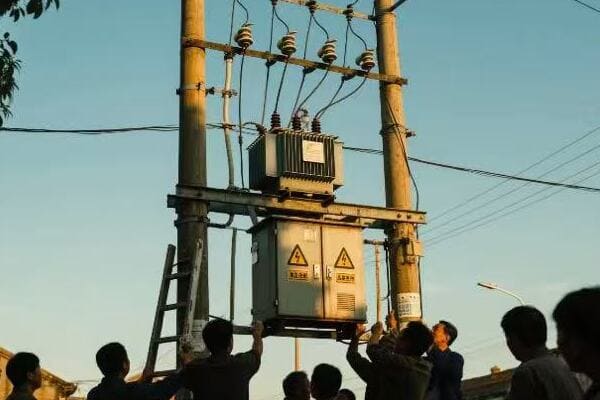
The Process of Pole Preparation and Transformer Mounting
Let’s break down the steps for a secure transformer setup:
1. Pole Inspection and Preparation
Before mounting anything, ensure the pole is ready:
- Visual Inspection: Check for cracks, rot, or damage
- Load Calculation: Verify the pole can support the transformer’s weight
- Treat and Reinforce: Apply preservatives and reinforce if necessary
I once encountered a pole that looked fine visually but was severely weakened internally. A thorough inspection saved us from a potential disaster.
2. Crossarm Installation
The crossarm is crucial for transformer support:
- Select Appropriate Size: Based on transformer weight and dimensions
- Use Quality Hardware: Bolts, braces, and insulators must be rated for the job
- Ensure Proper Alignment: The crossarm must be level and perpendicular to the pole
3. Transformer Mounting
Now for the main event – mounting the transformer:
- Lifting: Use appropriate lifting equipment rated for the transformer’s weight
- Positioning: Align the transformer correctly on the crossarm
- Securing: Use proper mounting brackets and hardware
4. Balance and Stability Check
After mounting:
- Check Balance: Ensure even weight distribution
- Verify Stability: The transformer should not shift or move
- Double-Check All Connections: Tighten all bolts and fasteners
Here’s a quick reference table for the mounting process:
| Step | Key Actions | Tools Needed |
|---|---|---|
| Pole Inspection | Check integrity, calculate load | Inspection tools, load calculator |
| Crossarm Installation | Mount and align crossarm | Level, drill, wrenches |
| Transformer Lifting | Safely lift transformer to height | Crane or lift equipment |
| Securing Transformer | Attach to crossarm, balance | Mounting hardware, level |
| Final Check | Verify stability and connections | Torque wrench, level |
In my experience, the most common mistake is rushing through the pole preparation phase. I remember a project where we were pressured to install quickly due to a power outage. Despite the urgency, I insisted on a thorough pole inspection. We discovered that the pole needed reinforcement, which delayed us by a few hours but prevented a potential collapse that could have been catastrophic.
Another critical aspect is understanding the specific requirements of different transformer types. For instance, single-phase and three-phase transformers have different mounting needs. I once worked on a project where the wrong mounting brackets were initially ordered for a three-phase transformer. Catching this error early saved us significant time and resources.
Weather considerations are also crucial. In areas prone to high winds or ice accumulation, additional bracing or guy wires may be necessary. I learned this lesson the hard way when a transformer in a coastal area shifted during a storm due to inadequate wind load considerations.
Proper tool selection and maintenance are often overlooked. Using the right tools, especially when it comes to lifting and securing the transformer, is vital. I always emphasize the importance of regularly inspecting and maintaining tools. A worn-out wrench or a damaged lifting strap can compromise the entire installation.
Lastly, documentation is key. Always document the installation process, including pole condition, hardware used, and any specific challenges encountered. This information is invaluable for future maintenance and troubleshooting. I’ve found that keeping detailed records has saved countless hours in subsequent maintenance visits.
Remember, a well-mounted transformer is the foundation of a reliable power distribution system. Take the time to do it right, and you’ll prevent numerous problems down the line.
Wiring and Connections: Ensuring Proper Electrical Integration of Pole Transformers?
Are you confident about wiring and connecting pole transformers correctly? This critical step can be daunting, and mistakes here can lead to inefficient power distribution or even dangerous situations. Let’s demystify this process.
Proper wiring and connections for pole transformers involve selecting the right cable size, making secure connections, and ensuring correct phasing. Key steps include proper insulation, using appropriate connectors, following wiring diagrams, and conducting thorough testing before energizing.
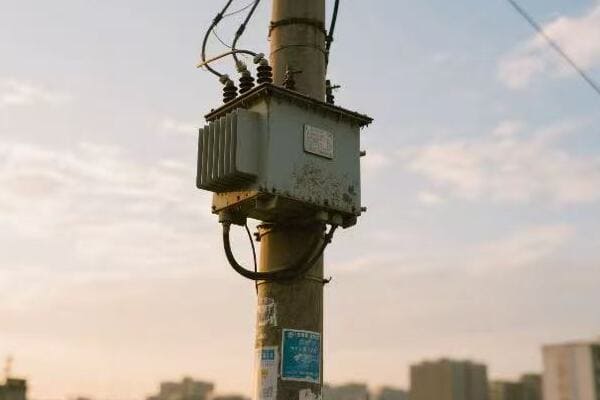
Diving into Wiring and Connection Techniques
Let’s break down the process of wiring and connecting pole transformers:
1. Cable Selection and Preparation
Choosing the right cables is crucial:
- Size Calculation: Determine proper cable size based on load and voltage
- Insulation Rating: Ensure cables are rated for the voltage level
- Preparation: Strip and clean cable ends properly
I once saw a installation where undersized cables were used, leading to overheating and eventual failure. Always double-check your calculations.
2. Making Secure Connections
Proper connection techniques are vital:
- Use Appropriate Connectors: Choose connectors rated for the voltage and environment
- Crimp or Bolt Securely: Ensure tight, low-resistance connections
- Apply Anti-Oxidation Compound: Prevent corrosion at connection points
3. Following Wiring Diagrams
Adhering to the correct wiring scheme is essential:
- Understand the Diagram: Familiarize yourself with the specific transformer’s wiring diagram
- Phase Identification: Correctly identify and connect phases
- Neutral and Ground Connections: Pay special attention to these critical connections
4. Insulation and Protection
Protect your connections:
- Apply Proper Insulation: Use appropriate materials for the voltage level
- Install Surge Arresters: Protect against voltage spikes
- Weather Proofing: Seal connections against environmental factors
5. Testing and Verification
Before energizing, thorough testing is crucial:
- Continuity Tests: Ensure all connections are complete
- Insulation Resistance Tests: Verify the integrity of insulation
- Turns Ratio Test: Confirm the transformer’s ratio is correct
Here’s a quick reference table for the wiring process:
| Step | Key Actions | Tools Needed |
|---|---|---|
| Cable Selection | Calculate size, check ratings | Wire gauge calculator, specs sheet |
| Connection Making | Crimp or bolt securely | Crimping tool, torque wrench |
| Diagram Following | Match connections to diagram | Wiring diagram, phase tester |
| Insulation Application | Apply appropriate materials | Insulation tape, heat shrink kit |
| Testing | Conduct all necessary tests | Multimeter, megohmmeter, turns ratio tester |
In my years of experience, I’ve learned that attention to detail in wiring and connections can make or break a transformer installation. I remember a project where we were upgrading an old transformer. The existing wiring was a mess of different gauges and makeshift connections. We took the time to completely rewire everything to standard, and the improvement in efficiency was remarkable.
One often overlooked aspect is the impact of environmental factors on connections. In a coastal project, we had to use special marine-grade connectors and extra weatherproofing to combat the corrosive sea air. It was more expensive initially, but it prevented frequent maintenance issues that would have been costly in the long run.
Another critical point is the importance of proper phasing. I once witnessed the aftermath of a transformer that had been incorrectly phased. It led to equipment damage at a nearby industrial facility. Since then, I always emphasize triple-checking phase connections and using phase rotation meters to verify.
Grounding and bonding deserve special attention. Proper grounding is not just about safety; it affects the overall performance of the transformer. I’ve seen installations where inadequate grounding led to power quality issues and increased vulnerability to lightning strikes.
Labeling is another aspect that’s often rushed but is incredibly important for future maintenance and troubleshooting. Clear, durable labels on all connections and cables can save hours of work later on. I make it a standard practice to create detailed wiring diagrams for each installation, which has proven invaluable during maintenance visits.
Lastly, never underestimate the value of post-installation testing. Even if everything looks correct, thorough testing can reveal issues that aren’t visible to the naked eye. I always perform a full suite of electrical tests before energizing a new or rewired transformer. It’s an extra step that has caught potential problems numerous times, preventing outages and safety hazards.
Remember, the quality of your wiring and connections directly impacts the transformer’s efficiency, longevity, and safety. Take the time to do it right, and you’ll be rewarded with a reliable, high-performing installation.
Grounding Techniques: Protecting Your Pole Transformer and Electrical System?
Are you confident in your transformer grounding techniques? Many technicians underestimate the importance of proper grounding, leading to safety hazards and reduced system reliability. Let’s explore how to get it right.
Effective grounding for pole transformers involves creating a low-impedance path to earth, using properly sized grounding conductors, and ensuring solid connections. Key techniques include installing ground rods, connecting to a grounding grid, and maintaining low resistance in the grounding system.

Exploring Effective Grounding Techniques
Let’s break down the essential aspects of grounding pole transformers:
1. Understanding Grounding Basics
Before we dive into techniques, it’s crucial to understand why grounding is important:
- Safety: Protects against electric shock
- Equipment Protection: Safeguards against overvoltage and lightning strikes
- System Stability: Helps maintain consistent voltage levels
I once witnessed a poorly grounded transformer that led to frequent equipment malfunctions in a nearby building. Proper grounding resolved the issues completely.
2. Selecting and Installing Ground Rods
Ground rods are the foundation of a good grounding system:
- Material Selection: Use copper-clad or galvanized steel rods
- Proper Depth: Install rods to the required depth (typically 8 feet or more)
- Multiple Rods: Use multiple rods if necessary to achieve low resistance
3. Grounding Conductor Installation
The grounding conductor is your link to earth:
- Size Calculation: Determine the appropriate size based on fault current
- Routing: Install the conductor with minimal bends
- Protection: Guard against physical damage, especially near ground level
4. Connecting to the Transformer
Proper connection to the transformer is crucial:
- Identify Grounding Points: Locate the transformer’s grounding terminals
- Secure Connections: Use appropriate connectors and tighten properly
- Corrosion Prevention: Apply anti-oxidation compound to connections
5. Testing and Maintenance
Regular testing ensures your grounding system remains effective:
- Resistance Testing: Measure ground resistance annually
- Visual Inspections: Check for damage or corrosion
- Retest After Changes: Always test after system modifications
Here’s a quick reference table for grounding techniques:
| Aspect | Key Considerations | Tools/Materials Needed |
|---|---|---|
| Ground Rod Installation | Depth, soil conditions | Ground rod driver, soil resistivity tester |
| Conductor Sizing | Fault current, code requirements | Wire size calculator, NEC handbook |
| Connection Methods | Exothermic welding vs. mechanical | Exothermic welding kit, torque wrench |
| Resistance Testing | Target resistance (typically <25 ohms) | Ground resistance tester |
| Corrosion Prevention | Use of anti-oxidation compounds | Anti-oxidation paste, brushes |
In my years of experience, I’ve learned that grounding is often the most overlooked aspect of transformer installation. I remember a project where we were called in to troubleshoot frequent equipment failures at a manufacturing plant. The culprit turned out to be an improperly grounded transformer causing voltage fluctuations. After installing a proper grounding system, the issues disappeared, and the plant saw a significant improvement in equipment lifespan.
One common mistake I’ve observed is relying solely on the utility pole’s ground. While this can be part of the grounding system, it’s often not sufficient on its own. I always recommend installing dedicated ground rods for the transformer. In one case, this approach reduced the ground resistance from over 100 ohms to less than 10 ohms, significantly improving safety and performance.
Soil conditions play a crucial role in grounding effectiveness. I once worked on a project in an area with very rocky soil. Standard ground rods weren’t achieving the required resistance. We had to get creative and use a combination of chemical ground rods and a larger grounding grid to achieve proper grounding. It was more work upfront, but it ensured long-term reliability.
Another important aspect is the grounding of surge arresters. These devices are crucial for protecting the transformer from lightning strikes and other voltage surges. I always ensure that surge arresters have a separate, direct path to ground. In a lightning-prone area, this approach saved a substation from severe damage during a particularly violent storm.
Bonding is often confused with grounding, but both are essential. I make sure to bond all metallic parts of the transformer installation, including the tank, brackets, and any nearby metallic structures. This practice prevents dangerous touch potentials and ensures that fault currents have a clear path to ground.
Regular testing and maintenance of the grounding system is crucial but often neglected. I’ve implemented a yearly testing schedule for all transformer installations I oversee. During one routine check, we discovered that ground connections had corroded significantly due to soil acidity. Catching this early allowed us to reinforce the grounding system before it failed.
Here are some additional tips I’ve learned over the years:
- Use exothermic welding for critical ground connections. It provides a more reliable, long-lasting connection than mechanical clamps.
- In areas with poor soil conductivity, consider using ground enhancement materials around the rods.
- Keep detailed records of ground resistance measurements. This helps in tracking degradation over time.
- Be aware of seasonal variations in soil resistivity. What works in the wet season might not be sufficient in dry conditions.
- In urban areas, be cautious of stray currents from nearby electrical systems. These can affect your grounding effectiveness.
Remember, a well-grounded transformer is not just about meeting code requirements. It’s about ensuring the safety of personnel, protecting valuable equipment, and maintaining power quality. Take the time to do it right, and you’ll have a safer, more reliable electrical system.
Routine Checks and Troubleshooting: Maintaining Pole Transformers for Longevity?
Are you confident in your ability to maintain and troubleshoot pole transformers effectively? Many technicians overlook crucial maintenance steps, leading to premature failures and costly replacements. Let’s explore how to keep these vital components running smoothly.
Effective maintenance of pole transformers involves regular inspections, proactive testing, and timely repairs. Key activities include visual checks, oil testing, thermal imaging, load monitoring, and addressing issues promptly. Proper maintenance extends transformer life and ensures reliable power distribution.
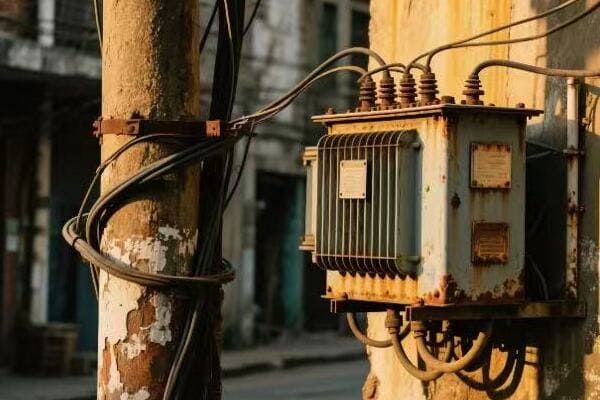
Diving into Maintenance and Troubleshooting Techniques
Let’s break down the essential aspects of maintaining and troubleshooting pole transformers:
1. Regular Visual Inspections
Visual checks are your first line of defense:
- External Condition: Look for rust, dents, or leaks
- Bushing Integrity: Check for cracks or contamination
- Oil Levels: Ensure proper oil levels in sight glasses
I once caught a small oil leak during a routine inspection that could have led to a major failure if left unchecked.
2. Oil Testing and Analysis
Oil is crucial for insulation and cooling:
- Dielectric Strength Test: Checks oil’s insulating properties
- Dissolved Gas Analysis (DGA): Identifies potential internal issues
- Moisture Content: Excessive moisture can degrade insulation
3. Thermal Imaging
Heat can indicate problems:
- Regular Scans: Conduct thermal imaging annually or bi-annually
- Hotspot Identification: Look for unusual temperature patterns
- Connection Checks: Identify loose or high-resistance connections
4. Electrical Testing
Periodic electrical tests ensure optimal performance:
- Turns Ratio Test: Verifies transformer windings
- Insulation Resistance Test: Checks insulation integrity
- Power Factor Test: Assesses overall condition
5. Load Monitoring
Keep an eye on the transformer’s workload:
- Regular Load Checks: Ensure the transformer isn’t overloaded
- Peak Load Recording: Identify potential capacity issues
- Load Balancing: Adjust loads if necessary
Here’s a quick reference table for maintenance activities:
| Activity | Frequency | Tools/Equipment Needed |
|---|---|---|
| Visual Inspection | Monthly | Inspection checklist, camera |
| Oil Testing | Annually | Oil testing kit, sample bottles |
| Thermal Imaging | Bi-annually | Thermal imaging camera |
| Electrical Testing | Every 3-5 years | Transformer test set |
| Load Monitoring | Continuous | Load monitoring devices |
In my experience, proactive maintenance is key to transformer longevity. I remember a case where we implemented a comprehensive maintenance program for a utility company. Within two years, we saw a 40% reduction in unexpected transformer failures. The key was catching and addressing minor issues before they became major problems.
One often overlooked aspect of maintenance is the importance of keeping good records. I always insist on detailed documentation of all inspections, tests, and repairs. This historical data is invaluable for identifying trends and predicting potential issues. In one instance, our records helped us identify a batch of transformers with a common manufacturing defect, allowing us to address the issue proactively across multiple sites.
Troubleshooting skills are equally important. I recall a challenging case where a transformer was repeatedly tripping offline. Standard tests showed no obvious issues. It was only when we conducted a detailed harmonic analysis that we discovered the problem – harmonic distortion from a nearby industrial facility was causing the transformer to overheat. By installing harmonic filters, we resolved the issue and improved overall power quality.
Here are some additional tips I’ve gathered over the years:
- Pay attention to environmental factors. Transformers in coastal or heavily polluted areas may need more frequent maintenance.
- Listen to the transformer. Unusual sounds can be early indicators of problems.
- Check for animal and vegetation intrusion. I’ve seen squirrels and vines cause significant damage.
- Be aware of the transformer’s age and history. Older units or those with a history of issues may need more frequent attention.
- Stay updated on manufacturer bulletins and recalls. Sometimes, systemic issues are identified after installation.
When troubleshooting, I always follow a systematic approach:
- Gather Information: Understand the symptoms and history
- Inspect Visually: Look for obvious signs of damage or wear
- Conduct Basic Tests: Start with simple, non-invasive tests
- Analyze Data: Look for patterns or anomalies in test results
- Formulate Hypotheses: Develop theories based on the data
- Test Hypotheses: Conduct targeted tests to confirm or rule out theories
- Implement Solutions: Address the root cause, not just symptoms
- Follow Up: Ensure the problem is fully resolved
Remember, effective maintenance and troubleshooting are about being proactive, thorough, and systematic. By staying vigilant and addressing issues promptly, you can significantly extend the life of pole transformers and ensure reliable power distribution.
Conclusion
Proper installation and maintenance of pole transformers are crucial for safe, efficient power distribution. From safety precautions to grounding techniques, each step requires attention to detail and expertise. Regular checks and proactive maintenance ensure longevity and reliability of these vital components.
Free CHBEB Transformer Catalog Download
Get the full range of CHBEB transformers in one catalog.
Includes oil-immersed, dry-type, pad-mounted, and custom solutions.
Quick Message
Request A free quote
We'd like to work with you
- +86 15558785111
- [email protected]
- +86 15558785111
What We Do
CHINA BEI ER BIAN (CHBEB) GROUP, with 218 million in registered capital, originated from Beijing Beierbian Transformer Group. Headquartered in Beijing for R&D, it operates major production bases in Nanjing and Yueqing, producing high-quality products.
Latest Product
address
BeiJing
No 3,RongJing East Road,BeiJing Economic Technological Development Area,BeiJing,China
JiangSu
No 7️Xiangfeng Road,Jiangning,NanJing,JiangSu,China
WenZhou
No.211, Wei 16 Road, Industrial Zone, Yueqing, Wenzhou, Zhejiang, China.
XiangYang Industrial Zone ,YueQing,WenZhou,ZheJiang,China
contact us
- [email protected]
- +86 13057780111
- +86 13057780111
- +86 15558785111
Copyright © Bei Er Bian Group


